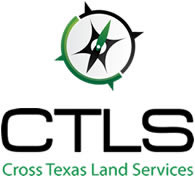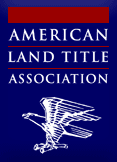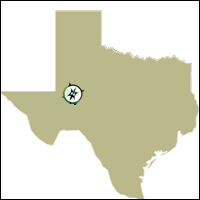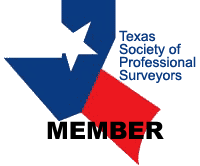Land Surveys
Land Title Surveys
It is our intent to clearly state the minimum requirements that must be provided in surveys where survey coverage is requested in either a Loan Policy of Title Insurance or an Owner’s Policy of Title Insurance.
Why Should You Care About Surveys?
There are many types of surveys, such as topographical surveys, mineral and subsurface surveys, construction surveys. A Land Title survey, however, is the type of survey required for title insurance purposes. A title company checks the recorded history of a property. They see the state of the property as shown by the documents recorded in the real property records.
A surveyor, on the other hand, makes a physical inspection of the property. Surveyors see the state of the property as it is on the ground. Surveyors, as the eyes on the ground, find matters that are not found by examining the real property records, for example:
- A neighbor’s fence encroaching into the property,
- The garage on the property protruding onto the neighbor’s property,
- Improvements encroaching into easements or set back lines,
- Unrecorded easements (as shown by overhead power lines, pipeline markers, sewer drains, roadways or driveways).
Regulation of the Surveying Industry
The Texas Board of Professional Land Surveying – The Board governs the licensing of surveyors. The minimum standards for professional land surveyors (“Minimum Standards of Practice”) adopted by the Board are found in Title 22, Texas Administrative Code, Chapter 663, Standards of Responsibility & Rules of Conduct. Texas Society of Professional Surveyors – TSPS is the trade association for professional surveyors in Texas. They have created their own standards to follow, which in most cases are more stringent than those established by the Texas Board of Professional Land Surveying. The TSPS standards are set out in its Manual of Practice for Land Surveying in Texas.
Requirements for a Survey Plat Acceptable for Title Insurance Purposes
ALTA (American Land Title Association) Minimum Standard Detail Requirements for ALTA/ASCM Land Title Surveys (2-23-11).
TSPS (Texas Society of Professional Surveyors) Minimum Standards of Practice for a Land Title Survey.
Definition of Land Surveying
Land Surveying is a branch of applied mathematics that teaches the art of determining the area of any portion of the earth’s surface, the lengths and directions of the bounding lines, and the contour of the surface and thereby accurately delineating the whole on paper. It also includes subdivision planning and design, the writing of legal descriptions, mapping, right-of-way determination, and construction layout all achieved through the precision measurements of angles, distances, elevations, areas and volumes.
Registered Professional Land Surveyor
Only a Registered Professional Land Surveyor (RPLS # 6359), as licensed by the fulfillment of the specific requirements of his/her respective state, may engage in the practice of land surveying.
Types of Surveys
Boundary Survey – Survey performed for the establishment or reestablishment of the boundary lines and property corners of a tract of land. This type of survey involves investigation and evaluation of the major factors such as easements and rights of way affecting and influencing the location of the boundary lines.
Construction Survey – Survey performed on a construction site to control positions, dimensions and configurations for all site improvements specified in the construction plans throughout the course of the project. This type of surveying would include utility staking, site grading, layout of structures or buildings, and layout of streets and curbing,
Land Title Survey – Survey performed for a lending or insuring institution that is a complete study and evaluation of all factors influencing and affecting the location of the boundaries, rights of way, and easements within or immediately surrounding a subdivision lot or tract of land. This type of survey aids in the evaluation of any title problems that may be evident relating to the actual occupation and possession of the property involved.
Right-of-Way Survey – Survey performed for the purpose of laying out an acceptable route for an easement or right-of-way for a road, pipeline, utility or transmission line. This survey would include the establishment of all boundary line and road crossings by the line along its route.
Subdivision Survey – Survey performed for the purpose of subdividing large tracts of land into smaller tracts, or previously undeveloped areas of land into lots, blocks, streets, parks, etc., all in accordance with the laws and ordinances established by the local and state governing agencies.
Topographic Survey – Survey performed to determine the configuration and elevations of the ground within a boundary, including the location of natural and/or man-made physical objects thereon. The topographic map prepared from the findings of a topographic survey will include contour lines delineating the grading of the land found on the property. It is useful in the development of the subject property based on real existing conditions.
Well Location Survey – Survey to establish the point of entry of a well bore on the ground for the excavation of oil located under the earth’s surface. This point is determined by establishing its relationship to the boundaries of the tract thereon.
When should a survey be performed?
Before any property is bought, sold, or subdivided. Before a dispute arises between two or more landowners when the boundaries of the properties involved are unknown or uncertain. Before designing or constructing any major improvements to a piece of property including, buildings, roads, fences, landscaping, etc.
Ordering a Survey
Typically the lender or title insurance company orders the survey when a piece of property is bought or sold and a Land Title Survey is needed. However, for other kinds of surveys that are needed an individual can contact the surveyor directly and explain his needs. If the needs of the individual are complicated, an appointment is advisable where the individual and the surveyor can meet face to face and discuss the best course of action to be taken to satisfy the individual’s needs. The parameters of the survey can be discussed and agreed upon at that time so that all parties involved will be well informed.
Choosing a Land Surveyor
A local listing of the available surveyors can be found in the Yellow Pages of your telephone directory. However, the best possible way of choosing which surveyor will meet your needs is by acquiring a personal recommendation from satisfied clients or through bankers, real estate developers, lawyers and title companies who handle real estate transactions frequently.
Pricing of Surveys
Fees charged by the surveyor are based upon an hourly rate for certain services provided. A rough estimate for a particular job can sometimes be provided based upon experience with similar jobs, and a general knowledge of the area involved, but usually actual costs are not known until the project is completed. The reason for this is that there are several unknown factors that have to be considered when providing an estimate. The amount of work required to recover the necessary evidence is indeterminable in advance, and the amount of time required to obtain field measurements and make boundary determinations depends largely on the availability and proximity of the monumentation found during the course of the survey. It is important to note here the careless treatment and destruction of survey monuments adds greatly to the cost of later survey work. When there is no evidence of original monumentation, it is extremely difficult to restore the boundaries as they previously existed.
Reducing the cost of a Survey
The first thing that will save the client money is for him to communicate with the surveyor effectively by letting him know exactly what his needs are from the beginning. If the surveyor is under the impression that one thing is needed and in actuality the client needs something else, much time will be wasted performing the unneeded work adding greatly to the cost of the survey. Also, any documents that the client may have in his possession such as an old survey of the property, a deed with a metes and bounds description, a title insurance policy or commitment, or any other relevant documents that provide information about the boundaries or ownership of the property can be very helpful in the preparation of the survey. Lastly, if the client has any knowledge of the whereabouts of any survey monumentation in the area, he should let the surveyor know about them by either physically showing him or marking them in some way as to make them more noticeable to the surveyor. (Placing plastic flagging around the monument would be the most preferred method.) This can reduce the amount of time it takes to perform the survey and save the client money.
















 ISNetworld
ISNetworld Texas Society of Professional Surveyors
Texas Society of Professional Surveyors